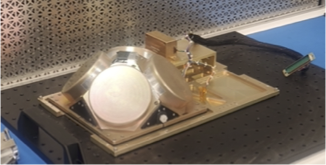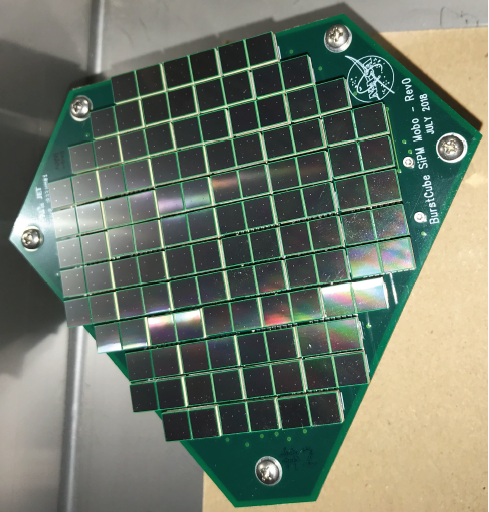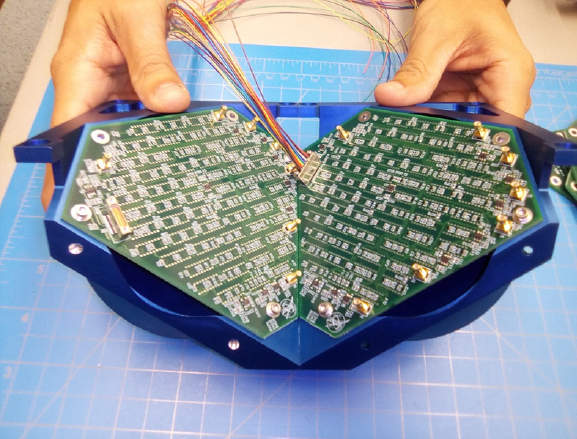About BurstCube
 Publications:
Publications:
 Mission Description:
Mission Description:
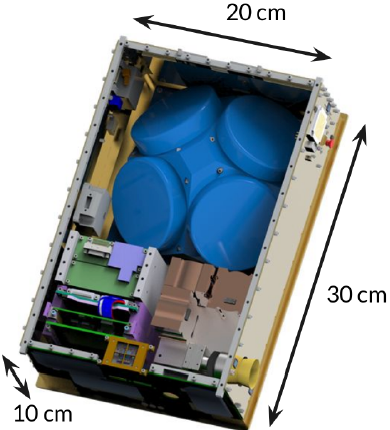
The BurstCube mission is a 6U (10 cm ×
20 cm × 30 cm) CubeSat mission
to detect gamma-ray burst events to send rapid alerts and provide initial
detection for events, with a special focus on short (<2 s) gamma-ray burst
targets (sGRBs) and coincident observations with gravitational wave sources.
After an initial six month mission span, operations may be extended for
the duration of the spacecraft’s functionality.
Data is relayed to the ground routinely every 2–12 hours, but
in the event of a special trigger event (such as a burst source detection),
trigger data is downloaded within minutes via TDRSS. Onbaord storage
of data also permits a number of requested time trigger events (RTTE)
should investigators desire them after looking at the QuickLook data.
The anticipated detection rate for sGRBs is 20 per year. The mission
should also detect around 100 long GRBs per year, providing improved
statistics for these sources.
The instrument hardware, and flight and ground software design builds off the
heritage from Fermi’s Gamma-ray Burst Monitor (GBM) instrument.
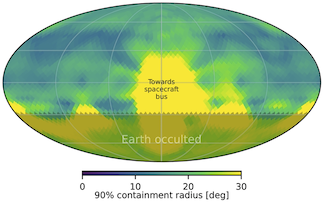
BurstCube observed the full unocculted sky in the zenithal direction,
using a set of four thallium-doped cesium iodide (CsI(Tl))
crystal detectors coupled to low-power silicon photomultipliers (SiPMs).
The crystals are circular disks, 9 cm in diameter and 1.9 cm thick,
mounted offset 45 degrees from zenith, with an array of 116 SiPMs
behind each. The individual crystal and SiPMs units are refered to as
single quarter detectors (SQDs). Each SQD is encased in an aluminium
housing which is transparent to gamma rays. Since a gamma ray source
produces more hits in an SQD on-axis than off-, relative signal
detection
from the combined SQDs provides directional information.

BurstCube develops a coarse location and relays that
detection to the ground (through the TDRSS network) within
minutes of detection. Roughly 90% of sGRBs are
located to within 30° accuracy.
The mission operation timeframe matches
observation runs with the LIGO gravitational wave
detector to provide rapid EM counterpart locations to any GW
events.
 BurstCube Mission and Instrument References
BurstCube Mission and Instrument References:
Latest News
18 Apr 2024
BurstCube deployed
BurstCube was deployed successfully from the ISS Thursday, April 18 at 7.26 am EST.
The deployment operations included two 6U cubesat SnoOPI and BurstCube. A snapshot
of the recorded
video shows
the two cubesats in space.
BurstCube
is the one of the left.
March 2024
BurstCube Launch
NASA’s SpaceX 30th commercial resupply mission lifted off from Space Launch Complex 40
in Florida on Thursday, March 21 at 4:55 p.m. EDT. The Dragon spacecraft, carrying BurstCube and
other scientific payloads as well as supplies, had docked to the International Space Station early
morning on Saturday, March 23.
